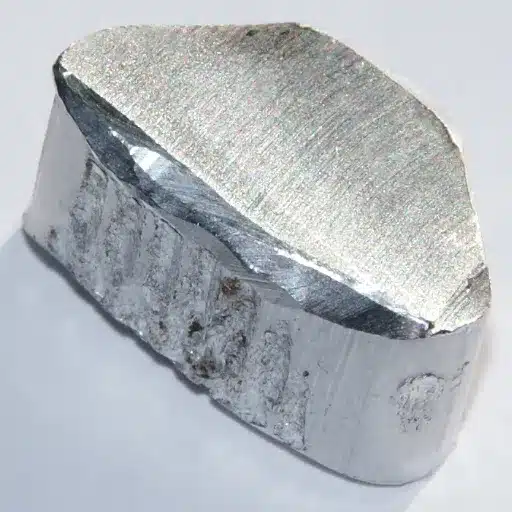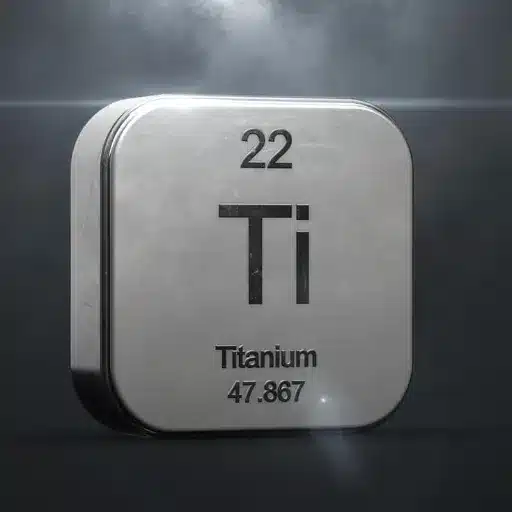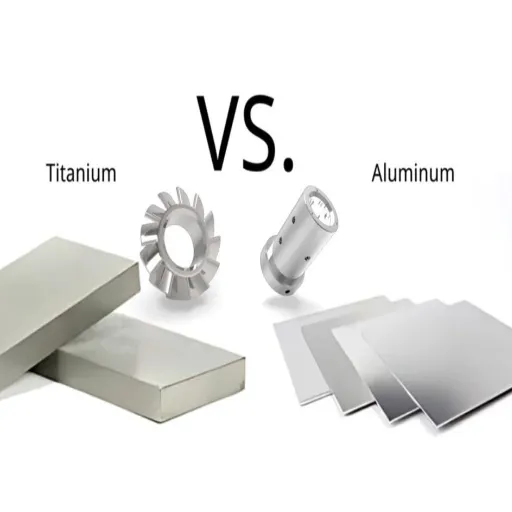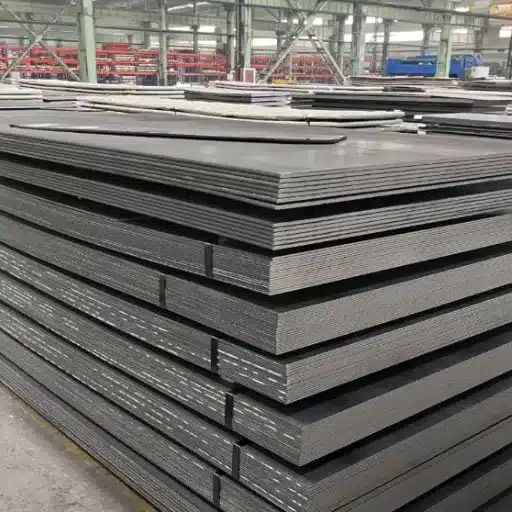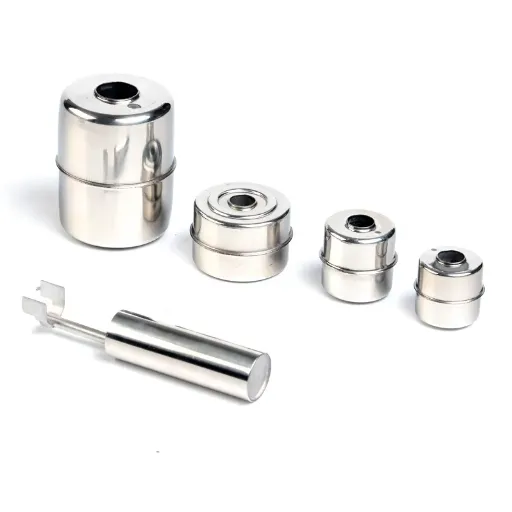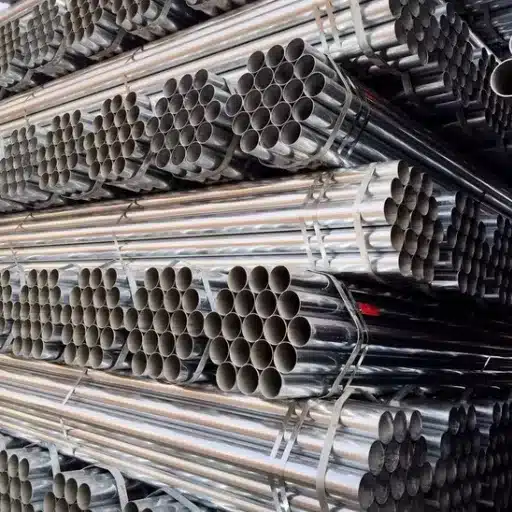Seamless pipes are the cornerstone of industrial innovation, serving as crucial elements in a variety of industries like oil and gas, aerospace, and construction. Made from a single piece of material without any welded joints, these pipes offer exceptional strength, durability, and reliability even in very harsh conditions.
This comprehensive guide explores seamless pipe material, the precision manufacturing processes that create them, their main applications, and the unique benefits they offer over welded alternatives. Whether you’re an engineer, project manager, or industry enthusiast, this article provides valuable insights into this essential industrial component.
Introduction to Seamless Pipe
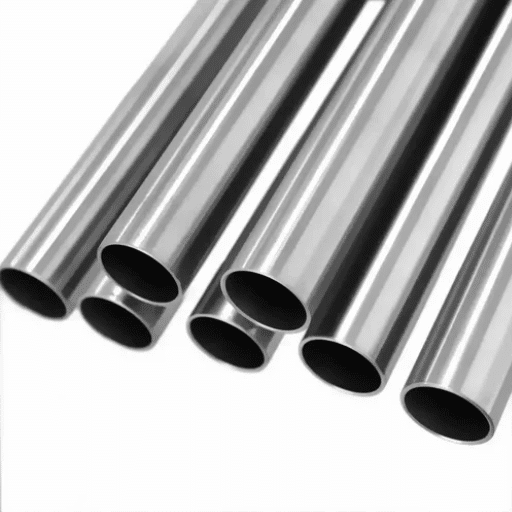
Seamless pipes are hollow cylinders formed without any welding seams, resulting in a uniform and continuous structure. Created through extrusion or rotary piercing methods, these pipes are molded from a single solid block, producing exceptionally strong, pressure-resistant, and durable products.
Seamless pipes are widely applied in industries where reliability of performance under extreme circumstances is essential, including oil and gas extraction, power generation, and chemical manufacturing.
Definition and Characteristics of Seamless Pipe
Seamless pipes are tubular hollow components produced without a welded seam or joint. This design positively impacts their performance in areas of high pressure, high temperature, and corrosive environments, making them ideal for critical applications.
Key Features of Seamless Pipes
- High Strength and Durability: The continuous, non-welded structure provides higher tensile strength and resistance to physical stress
- Pressure-Withstanding Capability: Can handle high internal and external pressures, making them suitable for heavy-duty industrial systems
- Thermal Resistance: Withstand extreme thermal shocks, ideal for high-temperature applications such as power generation and refining
- Corrosion Resistance: Stainless steel or alloy construction provides excellent resistance to corrosion and chemical reactions
- Dimensional Accuracy: Manufacturing techniques provide precise control of diameter and thickness, guaranteeing uniformity
Comparison with Welded Pipe
The differentiating features between seamless and welded pipes primarily concern their production processes, properties, and usage areas.
| Feature | Seamless Pipe | Welded Pipe |
|---|---|---|
| Manufacturing Process | Extrusion from solid billet – no welding seams | Rolling flat steel plate and welding edges together |
| Structural Integrity | Uniform strength throughout; no weak points | Potential weak point at weld seam |
| Pressure Capacity | Can withstand approximately 20% more pressure | Lower pressure tolerance at seam |
| Best Applications | High-pressure, high-temperature, critical systems | Low-pressure, general utility applications |
| Cost | Higher initial cost | More economical for budget projects |
| Reliability | Highest performance; minimal seam failure risk | Reliable for standard applications |
Recent data based on search trend analytics shows that “seamless vs. welded pipes” queries primarily relate to durability and pressure-resisting capabilities. Seamless pipes continue to dominate in demanding applications such as energy and chemical processing, where seam failure is not an option. Welded pipes remain the first choice for low-pressure applications due to their economical nature, making them suitable for general utility and water distribution systems.
Importance in the Gas and Oil Industry
Seamless pipes are indispensable in the gas and oil sector primarily due to their superior durability, pressure resistance, and ability to withstand extreme environmental conditions.
Critical Applications Include:
- Offshore drilling operations
- High-pressure transport systems
- Sour service conditions requiring corrosion resistance
- Enhanced oil recovery (EOR) technologies
- Geothermal energy systems
The long operational life of seamless pipes, combined with their low failure rate in extreme thermal and mechanical conditions, justifies their use even when costs are higher than welded alternatives. This reflects the industry’s commitment to meeting energy demands reliably and efficiently.
Manufacturing Process of Seamless Steel Pipe
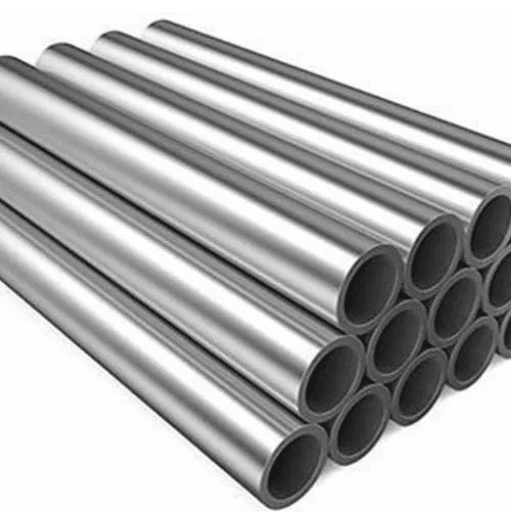
The manufacturing of seamless steel pipe utilizes expensive and cutting-edge processes that ensure the pipes meet the required properties for use in industries like oil and gas, energy generation, and geothermal systems.
Overview of the Manufacturing Process
The production process for seamless pipes is complex and incorporates various elements that guarantee high standards of quality, dimensional accuracy, and performance.
Step 1: Raw Material Selection
The process begins with selection of superior quality raw materials—typically billets or solid rounds of steel. These materials are heated to very high temperatures in a rotary hearth furnace to achieve the desired plasticity.
Step 2: Piercing
The hot billet is pierced using either a rotary piercer or cross-roll piercing mill, creating an initial hollow structure while maintaining uniform diameter throughout.
Step 3: Elongation and Sizing
The hollowed tube is elongated through mandrel mills or plug mills to achieve exact measurements without loss of structural integrity. Precision is gained through controlled deformation processes like mandrel or pilger rolling.
Step 4: Heat Treatment
Annealing is performed to enhance material properties and relieve internal stresses created during forming.
Step 5: Quality Control
Non-destructive testing detects flaws, and thorough inspections ensure compliance with industry standards.
🔬 Modern Technological Advancements:
- Thermomechanical Treatments: Optimize material properties and increase homogeneity
- Predictive Analytics: Process control via AI-powered monitoring systems
- Digital Twin Simulations: Enable real-time corrections during production
- AI-Based Quality Monitoring: Provides minute control over concentricity, wall thickness, and surface finish
This merger of precision machinery with data-driven insights ensures seamless pipes conform to even the most stringent requirements for high-tech industrial applications.
ASTM Standards for Seamless Steel
ASTM International standards for seamless steel are crucial in ensuring quality, durability, and performance meet the requirements of different high-demand industries.
| Standard | Application | Key Specifications |
|---|---|---|
| ASTM A106 | Seamless carbon steel pipes for high-temperature service | Chemical composition, tensile strength, impact resistance requirements |
| ASTM A53 | Both seamless and welded steel pipes | Structural and pressure applications specifications |
Recent developments show these standards are increasingly integrated with state-of-the-art quality control systems. Digital testing techniques like ultrasonic inspection and real-time data analytics are now used alongside traditional metallurgical evaluations, guaranteeing specified tolerances and requirements are met with high accuracy.
Quality Control Measures in Production
Quality control measures consist of a holistic approach integrating cutting-edge technological systems, uniform methodologies, and evolving data analytics:
- Automated Inspection Systems: Ensure accuracy in detecting and correcting manufacturing errors
- Machine Learning Algorithms: Identify real-time trends and process inefficiencies
- IoT-Enabled Devices: Monitor production parameters continuously
- Predictive Analytics: Forecast possible defects or downtimes before they occur
- Statistical Process Control (SPC): Ensure reproducibility and reliability
- Six Sigma Methodologies: Maintain strict adherence to quality standards
Advantages of Seamless Steel Tubing
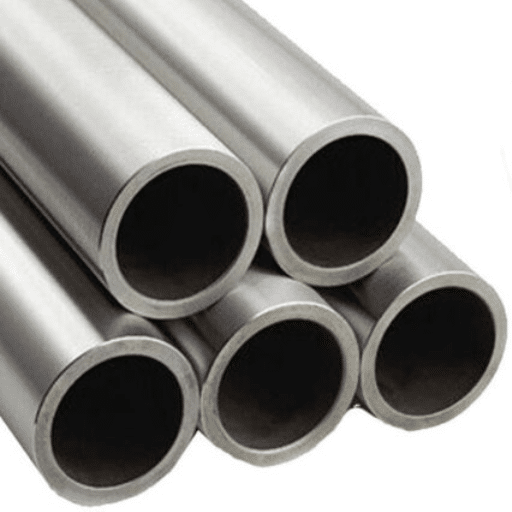
1. Exceptional Strength and Longevity
Seamless steel tubing has a reputation for its ability to endure high pressures and extreme conditions. Without welded seams, it has a uniform structure that limits weak points and possible failures.
Performance Data: Studies show seamless tubing can hold approximately 20% more pressure than welded counterparts, making it ideal for critical applications like oil and gas pipelines.
2. Enhanced Corrosion Resistance
The absence of welds acts as a barrier to corrosion, particularly in areas subjected to fluctuating temperature or chemical exposure.
Longevity Benefits: Research shows seamless tubing’s operative life could be around 30% longer than welded types, reducing total maintenance costs significantly.
3. Flawless Sizes and Precise Tolerances
Produced through tightly controlled processes like extrusion or rotary piercing, seamless steel tubes offer exceptional dimensional accuracy. This precision makes them the industry’s first choice for aerospace and automotive applications where exactness is paramount.
4. Flexibility for Heavy-Duty Applications
The production process gives seamless steel tubing high resistance to intense stress and vibrations without deformation or breaking. This is why it’s frequently selected for:
- Hydraulic systems
- Nuclear power plants
- High-performance machinery
- Applications requiring reliability under extreme stress
5. Better Flow Characteristics
Seamless tubes’ smooth and uniform inner surface decreases friction, permitting faster flow of liquids and gases. This feature is particularly useful in chemical processing industries where inefficiencies in fluid dynamics can directly affect process quality and energy consumption.
Performance Under High Pressure and Temperature
Seamless tubes demonstrate remarkable performance under extreme conditions, making them essential for industrial applications in power generation, chemical processing, and oil and gas extraction.
Performance Specifications:
- Temperature Tolerance: Up to 1,000°F (538°C)
- Pressure Capacity: Up to 20,000 psi
- Structural Integrity: Minimal deformation under extreme stress
- Thermal Fatigue Resistance: Excellent long-term performance
The ‘no welds’ method eliminates failure risk under extreme stress conditions that would typically challenge other materials. This precision engineering and superior metallurgical quality makes them invaluable in applications like heat exchangers and boilers, where reliability directly influences safety, operational continuity, and economic efficiency.
Common Applications of Seamless Pipes

🛢️ Oil and Gas Industry
Extensively used in extraction, drilling, transportation, and production. Ideal for well casings, pipelines, and risers, especially in offshore drilling operations exceeding 10,000 feet water depth.
⚡ Power Generation
Thermal and nuclear power plants utilize seamless pipes for boiler tubes and heat exchangers operating at temperatures up to 1,050°F (566°C) in superheated steam conditions.
🧪 Chemical & Petrochemical
Essential for transporting and processing chemicals in reactors, distillation columns, and storage systems. Superior resistance to heat and chemical reactivity handles substances like benzene, sulfuric acid, and ammonia.
✈️ Automotive & Aerospace
Lightweight, high-strength pipes used for fuel lines, hydraulic systems, and vehicle frames. Provides exceptional tensile strength and dimensional accuracy for vibrating and loading applications.
🏗️ Construction & Infrastructure
Crucial for skyscrapers, bridges, and industrial facilities requiring dynamic load resistance. Used in bearing columns, structural beams, and scaffolding systems.
Usage in the Oil and Gas Industry
Seamless pipes are of utmost importance in the oil and gas sector due to their exceptional strength, consistent quality, and ability to withstand extreme conditions across all operational phases:
| Operational Phase | Applications | Why Seamless Pipes |
|---|---|---|
| Upstream | Drill strings, casings, production tubes | Withstand high-pressure, high-temperature drilling environments |
| Midstream | Transportation pipelines for crude oil and natural gas | Handle pressure variations without leaking over long distances |
| Downstream | Refinery systems and processing equipment | Increased corrosion resistance and reliability in high-risk situations |
Recent Google search data reveals rising interest in sustainable and corrosion-resistant materials in the oil and gas industry, driven by standards requiring efficient and less risky operations. Seamless pipes’ compatibility with breakthrough anti-corrosion technologies further solidifies their position as vital components of contemporary oil and gas infrastructure.
Applications in High-Temperature and High-Pressure Scenarios
| Application | Operating Conditions | Critical Requirements |
|---|---|---|
| Subsea Pipelines and Risers | Hydrostatic pressures over 10,000 psi | Excellent collapse and fatigue resistance for deep-sea work |
| Steam Distribution Networks | Temperatures exceeding 410°F (210°C) | Maintain strength without deformation over time |
| Hydraulic Systems in Drilling Rigs | 3,000 to 5,000 psi operational pressure | Well-made walls and seamless construction to minimize failure risk |
| Heat Exchanger Tubing | Up to 1,100°F (593°C) with high pressures | Corrosion resistance to aggressive fluids during thermal management |
| High-Pressure Gas Injection Lines | Over 10,000 psi for CO2 injection | Excellent mechanical properties and resistance to internal forces for EOR |
Seamless Steel Pipe in Industrial and Commercial Sectors
Seamless steel pipes are essential across various industrial and commercial applications due to their superior quality, wide-ranging versatility, and extreme durability. Market analysts expect the global seamless steel pipe market to continue growing, driven by new energy infrastructure developments and advancements in manufacturing processes.
Key Industry Sectors:
- Oil and Gas: Secure and efficient material transport under extreme heat and pressure
- Construction: Structural support for high-rise buildings and bridges
- Automotive Production: High-performance components requiring precision
- Power Generation: Critical infrastructure for energy production
- HVAC and Plumbing: Distribution systems requiring reliability
Factors to Consider When Selecting Seamless Pipe Material

1. Corrosion Resistance
Assessment of corrosion resistance is crucial when determining material use. Pipes face various corrosive agents including acids, oxygen, carbon dioxide, and salts in different combinations.
- Stainless Steel: Best for high corrosion resistance in coastal areas, chemical processing, and pharmaceutical applications
- Carbon Steel: May require corrosion-resistant coatings for economic competitiveness
2. Temperature Tolerance
Material temperature limits are critical, especially in power generation or chemical industry applications dealing with extreme temperatures.
- Chromium-Molybdenum Steel: Typically utilized in high-temperature settings for long-lasting, thermal-stress-tolerant properties
3. Pressure Handling Capacity
Material pressure rating is major factor for high-pressure fluid transport applications. Seamless pipes’ uniform structure better withstands internal stresses, making proper material selection critical for meeting safety norms.
4. Compatibility with Industry Standards
Every application demands compliance with industry standards (ASTM, ASME, API). Selected materials must meet or exceed these standards to ensure reliability and safety, requiring specific mechanical and chemical properties with extensive testing validation.
5. Cost-Effectiveness
While performance remains top priority, cost considerations shouldn’t be ignored. Weighing material lifespan, maintenance needs, and initial cost is vital. Stainless steel may be more expensive initially but often provides greater long-term cost savings through extended lifespan and reduced maintenance.
Wall Thickness Considerations
Wall thickness significantly affects structural integrity, durability, and performance. Factors determining appropriate thickness include:
- Internal and external pressure requirements
- Mechanical stress expectations
- Temperature gradients during operation
- Exposure to corrosive environments
- Extreme temperature variations
Modern Engineering Approach: Computer modeling and Finite Element Analysis (FEA) enable accurate prediction of stress and deformation, reducing over-engineering while developing lighter, more economical, and safer designs that meet regulatory standards without material waste or performance loss.
Diameter and Wall Thickness Specifications
Selecting the right diameter and wall thickness requires precision in calculations and compliance with engineering standards. Specifications are governed by the interplay between external forces, internal pressures, and material properties.
Calculation Methods:
- Barlow Formula: Used for pipelines under high pressure, considering internal pressure, external diameter, and material’s allowable stress
- Finite Element Analysis (FEA): Enables engineers to envision different scenarios and fine-tune dimensions for optimal strength-to-weight balance
- Machine Learning Models: Improve accuracy of parameters using vast datasets
- AI-Powered Tools: Help identify future industry trends for proactive design compliance
Engineers who leverage these technologies can make well-supported, data-driven decisions ensuring components meet structural, economic, and environmental requirements while complying with ASME and ISO standards.
Choosing Between Stainless Steel and Carbon Steel Seamless Options
When selecting between stainless steel and carbon steel seamless pipes, consider mechanical properties, cost, longevity, and application-specific requirements.
| Factor | Stainless Steel | Carbon Steel |
|---|---|---|
| Corrosion Resistance | Excellent – chromium content creates protective oxide layer | Moderate – may require additional coatings/treatments |
| Temperature Performance | Retains structural characteristics in both high and low temperatures | Good strength at normal temperatures |
| Initial Cost | Higher upfront investment | More economical initial cost |
| Maintenance | Lower long-term maintenance costs | May require regular maintenance and protective measures |
| Best Applications | Food, pharmaceutical, chemical industries; moisture/acid/alkali exposure | Construction, structural components, pipelines, automotive parts |
| Tensile Strength | Excellent strength with corrosion resistance | Outstanding tensile strength; easy to machine |
📈 Search Trend Insights:Google search data reveals that stainless steel seamless pipe searches are primarily driven by high-tech industries and long-term infrastructure projects, reflecting desire for long-lasting, low-maintenance solutions. Carbon steel search trends indicate usage in budget-conscious projects and specific industrial applications like construction and machinery manufacturing.
References
-
Development and Application of Alloy TDJ-028 Seamless Pipe – A study on the development of Alloy TDJ-028 seamless pipes for oil country tubular goods (OCTG), hosted by Harvard’s ADS.
-
46 CFR § 56.60-1 – Acceptable Materials and Specifications – A legal resource from Cornell University discussing acceptable materials, including stainless steel, for marine piping applications.
Frequently Asked Questions (FAQ)
What is the difference between seamless and welded pipe?
In essence, the major difference seamless and welded pipes have is the way they are produced. The manufacturing of seamless pipes basically involves the extrusion of a solid material to produce a hollow pipe of considerable length. But the process of welded pipes is first rolling steel sheets and then joining them together at the edges with welding. In terms of strength and pressure capacity, seamless pipes are regarded as better than welded pipes, thus, their use is made in the high-pressure applications.
What are the advantages of seamless pipes?
Seamless pipes come with many advantages and one of them is that they can endure high pressures and stresses. Reliability and safety are the paramount concerns in such applications, and hence, seamless pipes find their way into the oil and gas industry. On top of that, they provide a uniform wall thickness and their chances of failing under pressure are very slim. The manufacturing helps in getting a very smooth inside and outside which decreases the chances of corrosion and hence increases the life of the pipes.
What materials are commonly used for seamless pipe manufacturing?
The major materials that are involved in the process of seamless pipe manufacturing are carbon steel, alloy steel, and stainless steel. Each material grade bears particular features that can be applicable for different purposes. For instance, the production of stainless steel seamless pipes is more over the usage in corrosive environments since their resistance to rust and corrosion is quite significant. On the other hand, carbon steel pipes are prevalent for their strength and durability across various industrial applications.
What is the typical wall thickness of seamless steel pipes?
The wall thickness for seamless steel pipes is fluctuating according to the nominal diameter and the application needs. Most of the time, the thickness is planned in such a way as to bear the max pressure and the given conditions. In case of high-pressure usage, thicker walls are employed as a matter of course to guard against accidents and preserve the system’s integrity.
How is seamless pipe material produced?
The production of seamless pipe material is quite complex and includes a combination of different processes like feeding and heating steel billets, piercing them to develop a hollow pipe, and then elongating and reducing the diameter of that pipe to the required thickness. This technique results in a consistent structure and no weak spots. Thus, the quality of seamless pipes produced is ideal for high-pressure applications.
In what industries are seamless pipes typically used?
Seamless pipes finds their usage in a diverse range of industries like petroleum, construction and transportation, etc. The properties of high strength and resistance to pressure make seamless pipes the best choice for carrying fluids and gases, especially in places where safety is the priority. Along with that, they are also extensively used in petrochemical applications and various structural purposes of buildings and bridges.
How do I choose a supplier for seamless steel pipe?
Supplier’s reputation, quality certifications, and product range should be amongst the first factors to consider when choosing one for seamless steel pipe. Moreover, the supplier must be able to ensure that their pipes adhere to specific industry standards like ASTM specifications. There is a possibility of checking their capability of providing a variety of sizes, grades, and custom specs from your needs, which would also be an advantage.
What is the pressure capacity of seamless stainless steel tubing?
The pressure capacity of seamless stainless steel tubing is determined by many factors including the material grade, wall thickenss, and pipe diameter. In general, seamless stainless steel tubing is able to endure higher pressures than welded tubing, hence, it is fit for use in the industries where performance and safety are critical applications.

